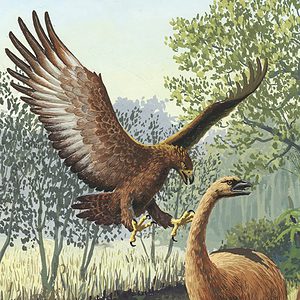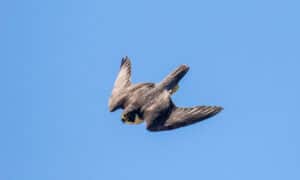You shouldn’t believe everything you see online, especially when photos can easily be altered with new technologies.
In this example, a Twitter account called Daily Owls posted a photo of a blue-feathered owl with bright blue eyes on its page in December of 2022.
While some believed that the “Norwegian Blue owl” was real, the image had been changed. The simple truth is that blue owls don’t exist. Verdict: Fake!
Background on Owls
Owls are nocturnal birds that have held significance across many cultures for centuries. Most associate the owl with the idea of wisdom. For instance, the owl was the bird of the goddess Athena of ancient Greece. Athena was the goddess of practical reason. Thus, having an owl by her side made the owl a symbol of wisdom. Furthermore, many ancient cultures believed that owls were prophetic; they could see into the future, which was another aspect of high intelligence that characterized the creature.
Besides intelligence, owls have long been associated with spirituality. Being a nocturnal animal with a distinctive voice and sound, the owl became a symbol of something beyond the tangible world. In several cases, the owl symbolized something ominous or dark. This interpretation of the owl was especially prevalent during the Medieval period. Many during this time also associated the creature with the religion of Christianity. In this case, the owl represented the time of darkness before Jesus Christ came to dwell on Earth.
Obviously, the owl’s mystical quality and ominous presence have shaped the animal’s symbolism for centuries. Due to the fantastical symbolism that many associate with the owl, the idea that a blue owl exists somewhere in the world isn’t an impossible concept. However, this conjecture over the magical creature is but another stab at uncovering the mystery of the owl. In reality, owls are not blue but, rather, can be brown, tan, gray, or a combination of red and brown.
Owls are typically between 5 and 28 inches in length with a wingspan between one and 6.6 feet. However, few owl species are large animals. Owls are carnivores, meaning they only eat the meat of what they can catch. Their talons are extremely sharp, allowing them to catch many kinds of prey with ease. Prey include insects and small rodents like mice or squirrels. Most owls have a small beak on their face and large beady eyes.
Examples of Owl Species
Owls exist in almost every location across the world. However, some owl species are more prevalent than others. For instance, the barn owl and the short-eared owl are very common across the globe and easily spotted. On the other hand, the Seychelles owl and the Palau owl only reside on specific islands, and both species are characterized by small population numbers. Luckily, owl species are rarely threatened by hunting and other human activities like hunting. Their nocturnal behavior allows them to avoid humans, who are usually active during daylight hours.
Up Next
- Can You Find the Camouflaged Mountain Lion in this Viral Photo?
- This Baby Owl Hearing Thunder for the First Time is the Cutest Thing You’ll See Today
- A Cat and an Owl Face Off in Backyard Brawl
The photo featured at the top of this post is © Tramont_ana/Shutterstock.com
Sources
- Frank Gill, Available here: https://www.britannica.com/animal/owl
- Michael Rozzen, Available here: https://www.10news.com/news/fact-or-fiction/fact-or-fiction-picture-shows-blue-owl-with-cat-like-whiskers#:~:text=cat%2Dlike%20whiskers.-,Some%20versions%20call%20it%20the%20'Norwegian%20Blue%20Owl.,There%20are%20no%20blue%20owls
FAQs (Frequently Asked Questions)
Are blue owls real?
Blue owls are not real. Owls can be brown, gray, tan, or a reddish brown.
What are examples of owl species?
Examples of owl species include the barn owl, the short-eared owl, the Seychelles owl, and the Palau owl.
What do owls symbolize?
Owls symbolize wisdom, spirituality, prophecy, or darkness.
Thank you for reading! Have some feedback for us? Contact the AZ Animals editorial team.






